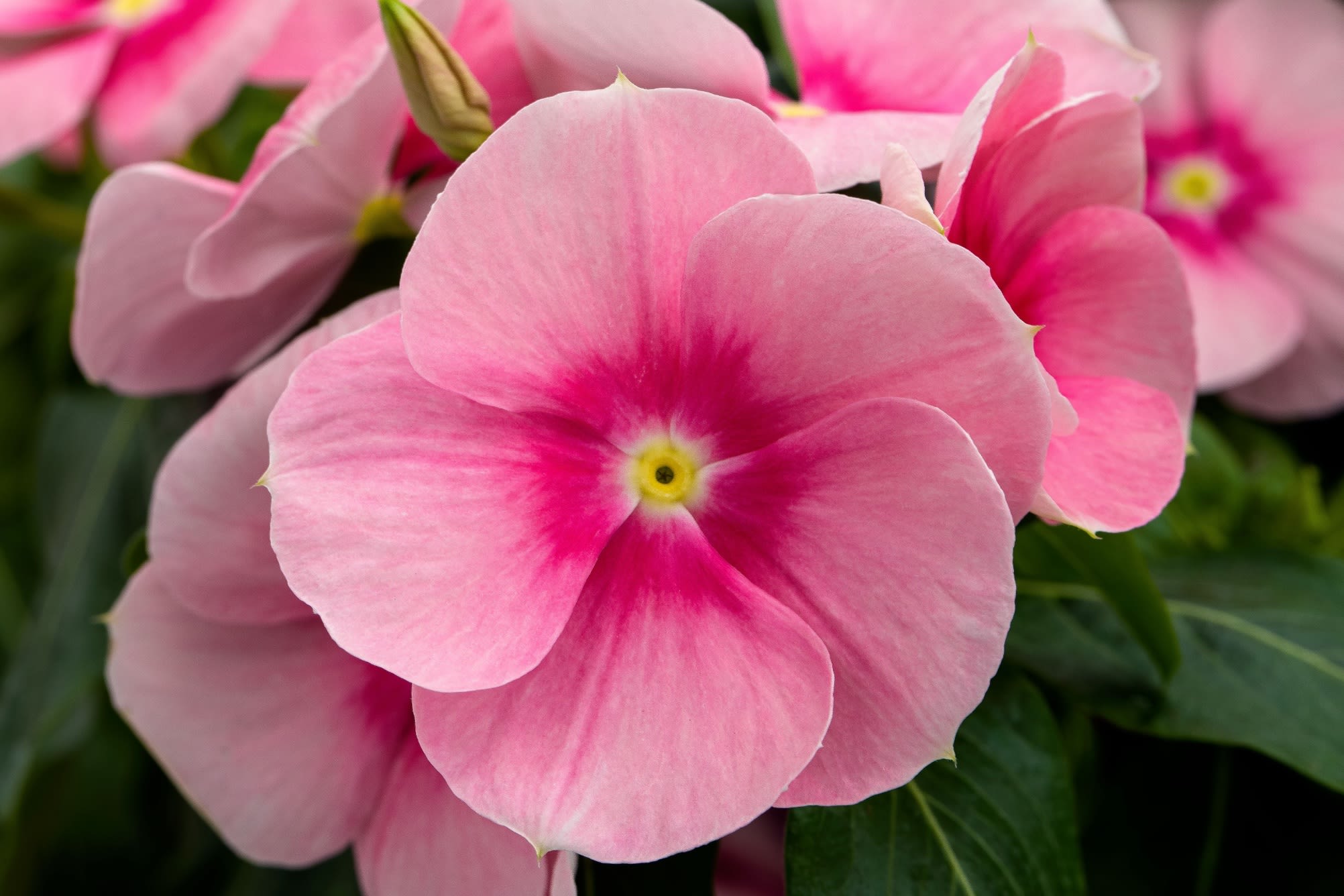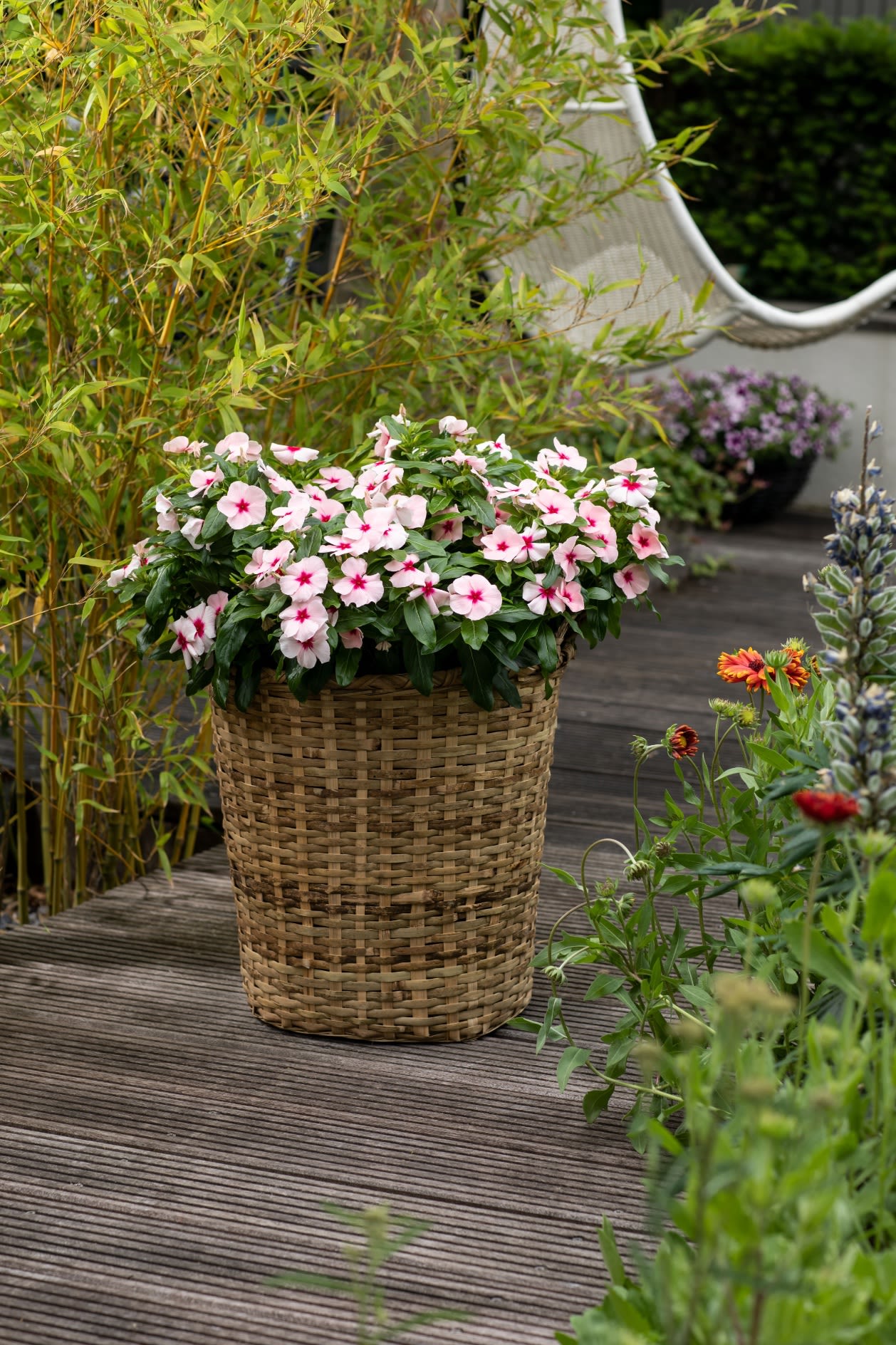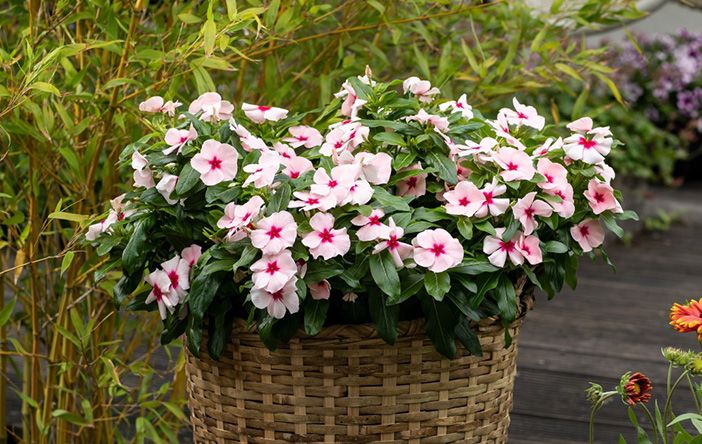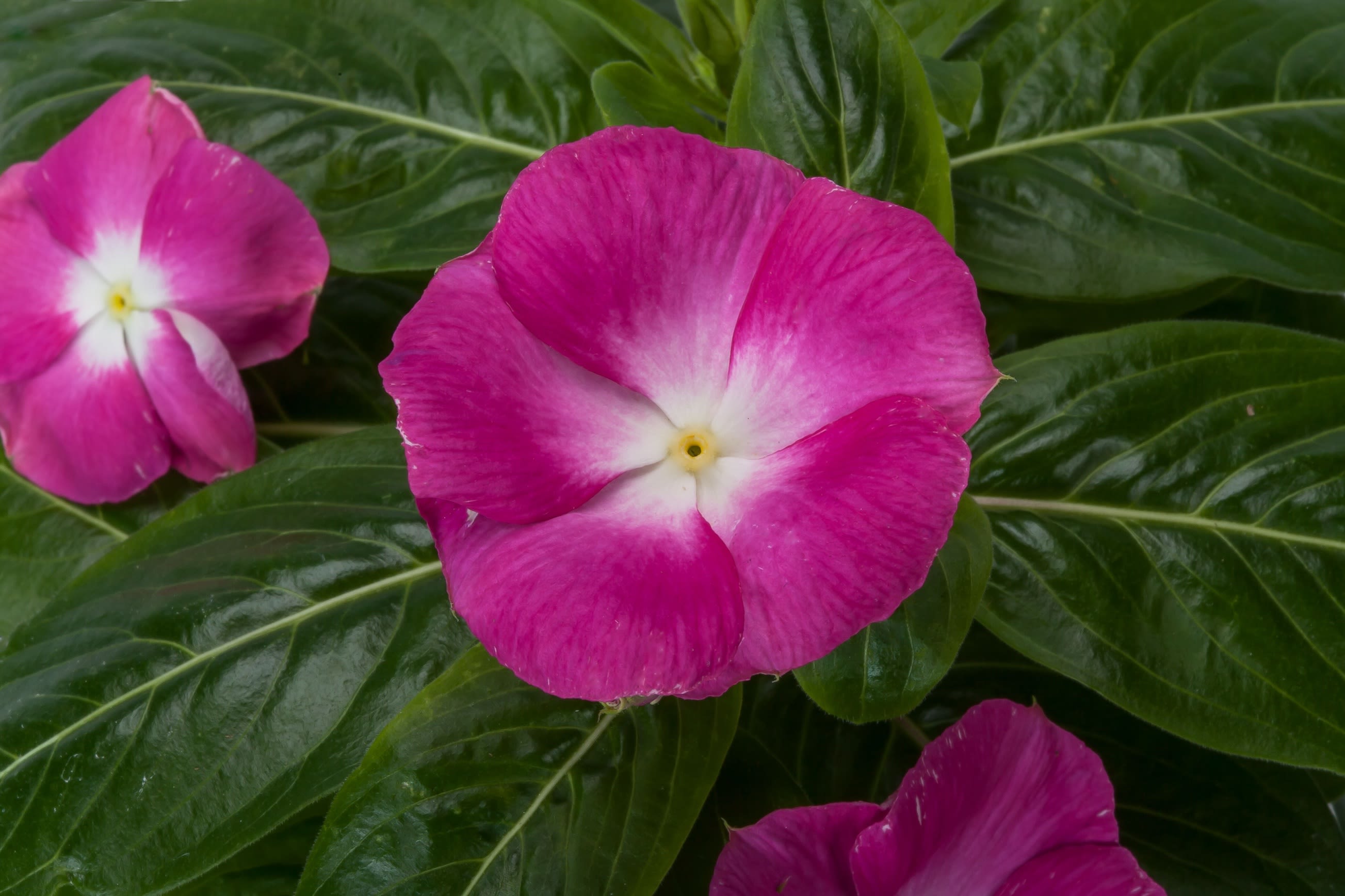Pathogen-fighting periwinkles
It’s the flower with the power, helping growers to breed healthy plants

There’s nothing quite like the magic of summer. Lazy days, pottering around the garden, admiring the colorful flowers, shrubs and trees.
Unfortunately, some of the most beautiful species are the most susceptible to disease, and bedding plants are no exception. Take the Madagascar periwinkle (Catharanthus roseus), a plant widely used for landscaping in both professional and personal settings.
Biggest threat to popular variety
Known by its common name of 'vinca', this annual is characterized by abundant flowers that bloom profusely throughout the summer in pink, red, purple and white, along with bi-colored petals.
But the low-maintenance vinca has been plagued by Phytophthora nicotianae, a fungus-like, water-borne microorganism. The pathogen is widely perceived as the biggest threat to annual vincas, wiping out affected plants which fall prey to stem blight and root rot.
Symptoms of the disease are relatively easy to identify. Once it has taken hold, wilting, leaf spots, stunted growth, and stem dieback are common. Eventually, the plant dies.
Derived from Greek, the word ‘Phytophthora’ means ‘plant destroyer’. It lives up to its name, especially during warm, wet conditions.
While improved drainage, spaced-out plants, and well-mulched soil (which reduces splashing from rain or irrigation) help to manage the spread of the disease, once a soil bed is infected, it’s incredibly difficult to eradicate.
An innovative solution was needed to tackle Phytophthora and help growers to preserve their plants and prevent future problems.
This year, Syngenta is celebrating its 25th anniversary. Check out more of our stories about innovation.
This year, Syngenta is celebrating its 25th anniversary. Check out more of our stories about innovation.
The Madagascar periwinkle is characterized by abundant flowers that bloom profusely throughout the summer.
The Madagascar periwinkle is characterized by abundant flowers that bloom profusely throughout the summer.
Biggest threat to popular variety
Known by its common name of 'vinca', this annual is characterized by abundant flowers that bloom profusely throughout the summer in pink, red, purple and white, along with bi-colored petals.
But the low-maintenance vinca has been plagued by Phytophthora nicotianae, a fungus-like, water-borne microorganism. The pathogen is widely perceived as the biggest threat to annual vincas, wiping out affected plants which fall prey to stem blight and root rot.
Symptoms of the disease are relatively easy to identify. Once it has taken hold, wilting, leaf spots, stunted growth, and stem dieback are common. Eventually, the plant dies.
Derived from Greek, the word ‘Phytophthora’ means ‘plant destroyer’. It lives up to its name, especially during warm, wet conditions.
While improved drainage, spaced-out plants, and well-mulched soil (which reduces splashing from rain or irrigation) help to manage the spread of the disease, once a soil bed is infected, it’s incredibly difficult to eradicate.
An innovative solution was needed to tackle Phytophthora and help growers to preserve their plants and prevent future problems.
This year, Syngenta is celebrating its 25th anniversary.
This year, Syngenta is celebrating its 25th anniversary.
The Madagascar periwinkle is characterized by abundant flowers that bloom profusely throughout the summer.
The Madagascar periwinkle is characterized by abundant flowers that bloom profusely throughout the summer.
“I worked with a team to enhance a resistance to the disease using intense strategies,” says Amanda Hershberger. Currently Productivity Improvement Lead, between 2012 and 2020 she was responsible for leading annual vinca breeding at Syngenta Flowers.
“Our strategies paid off. Although there was a year where I lost 90 percent of our crop, what survived eventually became the parents of the product you see today.”


A fast response
Cora XDR is highly resistant to 10 of the most virulent isolates (individual samples of a pathogen used for testing) of Phytophthora, offering peace of mind to sellers and buyers alike.
It took seven years to find a robust response to Phytophthora, culminating in the launch of Cora XDR in 2019. In the plant world, this is quick. When employing traditional breeding methods, it can take more than 10 years to bring a new variety to market. In some cases, the timeframe is more than 20 years.
Vibrant and durable
Hershberger says: “Breeding processes can be lengthy due to different factors. These include the number of traits that need to be incorporated in a commercial product (high levels of disease resistance, high yield, branching, ideal flower form), the number of genes controlling traits, and access to appropriate growing conditions throughout each season, to name a few.”
This Cora XDR series quickly became a popular choice for gardeners thanks to its vibrant colors and durability. Now, due to its ability to withstand sweltering conditions, drought, and poor soil, the Cora XDR series, available as upright and cascading cultivars, is used in beds, borders, edging, and containers.
Reflecting on the achievements of the Syngenta team, Hershberger says that they used traditional breeding “and we were proud of the fact that we were able to get these things out the door in the time that we did with traditional approaches”.
Plant breeding has evolved from traditional to modern approaches, each with their own distinct characteristics. For example, traditional breeding uses selective cross-pollination based on observable traits and usually faces fewer regulatory hurdles.
Modern breeding employs specific tools such as gene editing and marker-assisted selection, and has wider access to diverse genetic sources.
It took seven years to find a robust response to Phytophthora.
It took seven years to find a robust response to Phytophthora.
While modern methods can be more efficient and help to expedite the breeding process, they are not always appropriate, as Hershberger explains.
“Often in ornamentals, molecular markers [molecules which give information about their source] are not available, and there may also be regulatory limitations. So, we often do the best we can with traditional methods.”
Continuing the legacy
Nonetheless, Hershberger says that “to get a full series out in the time we did was huge”.
Hershberger explains: “Our team quickly modified our methods, meaning that significantly larger populations could be screened than before. We also created extremely harsh conditions that only the strongest could survive – a survival of the fittest.”
Innovation never stops, as Syngenta has recently launched a new series, Cora Cascade XDR, a trailing vinca that continues the legacy of the original with high levels of resistance to multiple strains of aerial Phytophthora, which affects the above-ground parts of the plant, and, of course, high-quality flowers providing blankets of color lasting all season long.
This year, Syngenta is celebrating its 25th anniversary. We are proud of our continuous innovation and contribution to the food system over the past quarter century. Check out more of our stories about innovation.
This year, Syngenta is celebrating its 25th anniversary. We are proud of our continuous innovation and contribution to the food system over the past quarter century. Check out more of our stories about innovation.







